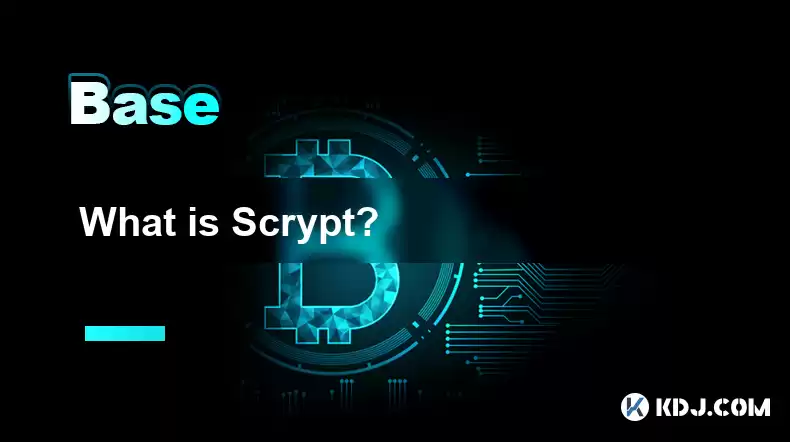-
 Bitcoin
Bitcoin $118800
0.54% -
 Ethereum
Ethereum $3877
1.66% -
 XRP
XRP $3.241
1.65% -
 Tether USDt
Tether USDt $1.000
-0.02% -
 BNB
BNB $847.6
6.33% -
 Solana
Solana $191.5
2.07% -
 USDC
USDC $0.9999
0.01% -
 Dogecoin
Dogecoin $0.2410
1.50% -
 TRON
TRON $0.3251
0.92% -
 Cardano
Cardano $0.8281
0.30% -
 Hyperliquid
Hyperliquid $44.16
2.94% -
 Sui
Sui $4.248
-1.08% -
 Stellar
Stellar $0.4393
0.17% -
 Chainlink
Chainlink $19.01
1.22% -
 Hedera
Hedera $0.2836
-0.11% -
 Bitcoin Cash
Bitcoin Cash $586.4
-1.17% -
 Avalanche
Avalanche $26.93
7.96% -
 Litecoin
Litecoin $113.4
0.15% -
 Toncoin
Toncoin $3.388
2.31% -
 Shiba Inu
Shiba Inu $0.00001407
0.49% -
 UNUS SED LEO
UNUS SED LEO $8.968
-0.10% -
 Ethena USDe
Ethena USDe $1.001
-0.05% -
 Uniswap
Uniswap $10.92
2.53% -
 Polkadot
Polkadot $4.219
1.56% -
 Monero
Monero $328.2
1.19% -
 Bitget Token
Bitget Token $4.651
1.12% -
 Pepe
Pepe $0.00001285
1.47% -
 Dai
Dai $0.9998
0.00% -
 Cronos
Cronos $0.1440
1.74% -
 Aave
Aave $303.5
2.31%
What is Scrypt?
Scrypt, designed to resist hardware attacks, is used in Litecoin and Dogecoin, aiming to make mining more accessible but facing challenges from ASIC development.
Apr 11, 2025 at 06:56 am

Scrypt is a password-based key derivation function that was originally designed to be a more secure alternative to existing functions like PBKDF2 and bcrypt. In the world of cryptocurrencies, Scrypt is particularly notable because it is used as the proof-of-work (PoW) algorithm in several digital currencies, most famously Litecoin. This article will delve into the details of Scrypt, its role in cryptocurrencies, and how it differs from other algorithms.
Origins and Purpose of Scrypt
Scrypt was created by Colin Percival in 2009, with the primary goal of making it more resistant to hardware-based attacks, particularly those using specialized hardware like ASICs (Application-Specific Integrated Circuits). Unlike simpler hash functions, Scrypt is designed to be memory-intensive, which makes it more difficult and expensive to create hardware that can perform the calculations quickly.
The main purpose of Scrypt is to provide a more secure method for deriving keys from passwords. By requiring a significant amount of memory, Scrypt aims to slow down the process of brute-force attacks, making it more time-consuming and costly for attackers to crack passwords.
How Scrypt Works
Scrypt operates by taking an input (such as a password) and producing an output (a derived key) through a series of steps that involve both computational and memory-intensive operations. The process can be broken down into several key components:
- Password and Salt: The input to Scrypt includes a password and a salt, which is a random value added to the password to prevent pre-computation attacks.
- Memory-Hard Function: Scrypt uses a memory-hard function called ROMix, which requires a large amount of memory to perform its operations. This is what makes Scrypt resistant to hardware-based attacks.
- Parallelization: Scrypt allows for a certain degree of parallelization, meaning that multiple instances of the function can be run simultaneously to speed up the process. However, the memory requirements still make it difficult to achieve significant speed gains with specialized hardware.
Scrypt in Cryptocurrencies
In the cryptocurrency world, Scrypt is most commonly known for its use in Litecoin, which was created by Charlie Lee in 2011. Litecoin was designed to be a "silver" to Bitcoin's "gold," and one of the key differences between the two is the use of Scrypt as the PoW algorithm instead of SHA-256.
Scrypt's memory-intensive nature was intended to make Litecoin mining more accessible to individuals using standard computer hardware, as opposed to Bitcoin mining, which quickly became dominated by ASICs. However, over time, ASICs designed specifically for Scrypt mining were developed, which somewhat diminished this advantage.
Other cryptocurrencies that use Scrypt as their PoW algorithm include Dogecoin, which was created as a more lighthearted alternative to Bitcoin, and Vertcoin, which aims to keep mining decentralized by using a variation of Scrypt called Lyra2REv2.
Advantages of Scrypt
Scrypt offers several advantages over other PoW algorithms, particularly in the context of cryptocurrencies:
- Resistance to ASICs: While Scrypt-specific ASICs do exist, the memory requirements of Scrypt make it more difficult and expensive to develop these devices compared to those for algorithms like SHA-256.
- Increased Security: The memory-hard nature of Scrypt makes it more resistant to brute-force attacks, which is beneficial for both password protection and cryptocurrency mining.
- Decentralization: By making mining more accessible to individuals with standard hardware, Scrypt aims to promote a more decentralized network, although this goal has been somewhat undermined by the development of Scrypt-specific ASICs.
Disadvantages of Scrypt
Despite its advantages, Scrypt also has some drawbacks:
- Energy Consumption: Like all PoW algorithms, Scrypt requires significant computational power, which translates to high energy consumption. This is a concern for the environmental impact of cryptocurrencies that use Scrypt.
- ASIC Development: While Scrypt was designed to be resistant to ASICs, the development of Scrypt-specific ASICs has somewhat negated this advantage, leading to a centralization of mining power in the hands of those who can afford these devices.
- Complexity: The memory-intensive nature of Scrypt makes it more complex to implement and understand compared to simpler algorithms like SHA-256.
Scrypt vs. Other PoW Algorithms
Scrypt is often compared to other PoW algorithms, particularly SHA-256, which is used by Bitcoin. Here are some key differences:
- Memory Requirements: Scrypt requires significantly more memory than SHA-256, which makes it more resistant to hardware-based attacks but also more complex to implement.
- ASIC Resistance: While both algorithms have seen the development of ASICs, Scrypt's memory requirements make it more difficult and expensive to create these devices.
- Energy Efficiency: Scrypt is generally considered to be less energy-efficient than SHA-256 due to its higher memory requirements.
Implementing Scrypt in Cryptocurrency Mining
For those interested in mining cryptocurrencies that use Scrypt, the process can be somewhat different from mining those that use other algorithms. Here are the steps to get started with Scrypt mining:
- Choose a Cryptocurrency: Decide which Scrypt-based cryptocurrency you want to mine, such as Litecoin or Dogecoin.
- Select Mining Hardware: While Scrypt was designed to be more accessible to individuals with standard hardware, Scrypt-specific ASICs are now available and can significantly increase mining efficiency.
- Join a Mining Pool: Mining Scrypt-based cryptocurrencies can be more profitable when done as part of a mining pool, which allows miners to combine their computational power and share the rewards.
- Set Up Mining Software: Download and configure mining software that is compatible with Scrypt, such as CGMiner or EasyMiner.
- Start Mining: Once your hardware and software are set up, you can begin mining. Monitor your mining performance and adjust your setup as needed to maximize efficiency.
Frequently Asked Questions
Q: Can Scrypt be used for purposes other than cryptocurrency mining?
A: Yes, Scrypt was originally designed as a password-based key derivation function and can be used for securing passwords and other sensitive data. Its memory-intensive nature makes it particularly effective at slowing down brute-force attacks.
Q: How does Scrypt compare to other memory-hard functions like Argon2?
A: Scrypt and Argon2 are both memory-hard functions, but Argon2 is considered to be more flexible and customizable. Argon2 won the Password Hashing Competition in 2015 and is designed to be more resistant to side-channel attacks.
Q: Is it still possible to mine Scrypt-based cryptocurrencies profitably with a standard computer?
A: While it is technically possible to mine Scrypt-based cryptocurrencies with a standard computer, it is generally not profitable due to the development of Scrypt-specific ASICs. Miners using standard hardware are at a significant disadvantage in terms of mining efficiency and profitability.
Q: Are there any cryptocurrencies that use variations of Scrypt?
A: Yes, some cryptocurrencies use variations of Scrypt to further enhance security and decentralization. For example, Vertcoin uses a variation called Lyra2REv2, which is designed to be even more resistant to ASICs than standard Scrypt.
Disclaimer:info@kdj.com
The information provided is not trading advice. kdj.com does not assume any responsibility for any investments made based on the information provided in this article. Cryptocurrencies are highly volatile and it is highly recommended that you invest with caution after thorough research!
If you believe that the content used on this website infringes your copyright, please contact us immediately (info@kdj.com) and we will delete it promptly.
- US President, EU Trade, Crypto Spike: What's the Deal?
- 2025-07-28 18:30:12
- Dogecoin Howling at the Moon? Patent Filing & Bullish Indicators Align!
- 2025-07-28 18:55:34
- Nano Labs' BNB Bonanza: A $100 Million Crypto Treasury Play
- 2025-07-28 19:30:12
- Rare Coin Auction: Congressional Gold Medal Fetches £180,000!
- 2025-07-28 19:30:12
- OnyxCoin Price Pump: Analyst Insights and What's Next for XCN
- 2025-07-28 19:35:15
- Sui Price Rockets: Trading Volume Surges, Bull Target in Sight!
- 2025-07-28 19:35:15
Related knowledge

What is the difference between CeFi and DeFi?
Jul 22,2025 at 12:28am
Understanding CeFi and DeFiIn the world of cryptocurrency, CeFi (Centralized Finance) and DeFi (Decentralized Finance) represent two distinct financia...

How to qualify for potential crypto airdrops?
Jul 23,2025 at 06:49am
Understanding What Crypto Airdrops AreCrypto airdrops refer to the distribution of free tokens or coins to a large number of wallet addresses, often u...

What is a crypto "airdrop farmer"?
Jul 24,2025 at 10:22pm
Understanding the Role of a Crypto 'Airdrop Farmer'A crypto 'airdrop farmer' refers to an individual who actively participates in cryptocurrency airdr...

What is the difference between a sidechain and a Layer 2?
Jul 20,2025 at 11:35pm
Understanding the Concept of SidechainsA sidechain is a separate blockchain that runs parallel to the main blockchain, typically the mainnet of a cryp...

What is the Inter-Blockchain Communication Protocol (IBC)?
Jul 19,2025 at 10:43am
Understanding the Inter-Blockchain Communication Protocol (IBC)The Inter-Blockchain Communication Protocol (IBC) is a cross-chain communication protoc...

How does sharding improve scalability?
Jul 20,2025 at 01:21am
Understanding Sharding in BlockchainSharding is a database partitioning technique that is increasingly being adopted in blockchain technology to enhan...

What is the difference between CeFi and DeFi?
Jul 22,2025 at 12:28am
Understanding CeFi and DeFiIn the world of cryptocurrency, CeFi (Centralized Finance) and DeFi (Decentralized Finance) represent two distinct financia...

How to qualify for potential crypto airdrops?
Jul 23,2025 at 06:49am
Understanding What Crypto Airdrops AreCrypto airdrops refer to the distribution of free tokens or coins to a large number of wallet addresses, often u...

What is a crypto "airdrop farmer"?
Jul 24,2025 at 10:22pm
Understanding the Role of a Crypto 'Airdrop Farmer'A crypto 'airdrop farmer' refers to an individual who actively participates in cryptocurrency airdr...

What is the difference between a sidechain and a Layer 2?
Jul 20,2025 at 11:35pm
Understanding the Concept of SidechainsA sidechain is a separate blockchain that runs parallel to the main blockchain, typically the mainnet of a cryp...

What is the Inter-Blockchain Communication Protocol (IBC)?
Jul 19,2025 at 10:43am
Understanding the Inter-Blockchain Communication Protocol (IBC)The Inter-Blockchain Communication Protocol (IBC) is a cross-chain communication protoc...

How does sharding improve scalability?
Jul 20,2025 at 01:21am
Understanding Sharding in BlockchainSharding is a database partitioning technique that is increasingly being adopted in blockchain technology to enhan...
See all articles

























































































